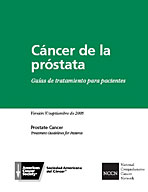May 23, 2007— Performing less invasive laparoscopic surgery using robotic technology may improve survival rates for prostate cancer patients, according to a study by urologic oncologists at Thomas Jefferson University Hospital's multidisciplinary Genitourinary (GU) cancer center.
In a study presented May 21, 2007 at the annual American Urological Society meeting in Anaheim, Calif., the Jefferson urologists found that performing a laparoscopic radical prostatectomy (LRP) with robot technology can reduce positive surgical margins. Positive surgical margins refers to when cancer, seen under a microscope, goes to the edge of a specimen, meaning that cancerous cells likely remain in the patient. LRP is the surgical removal of the entire prostate gland and surrounding tissue including the seminal vessels through several tiny incisions.
"We demonstrated a significant improvement in the positive surgical margin rate with the addition of robotics to an established LRP," said Costas Lallas, M.D., assistant professor of Urology, Jefferson Medical College of Thomas Jefferson University, one of the investigators.
"Several large studies have demonstrated that a positive surgical margin increases the chances that the prostate-specific antigen (PSA) -- a protein produced by the cells of the prostate gland -- will rise after surgery, and increase the chances that the disease will reoccur and progress," said Edouard Trabulsi, M.D., assistant professor of Urology, Jefferson, a urologic oncologist and an expert trained in laparoscopic prostatectomy by one of the pioneers of the technique. ÂTherefore, any intervention or technique to lower positive surgical margins, we think, will translate into a better long-term cure rate."
The study demonstrates that even in a high volume center with an established laparoscopic radical prostatectomy program, which has been in place at Jefferson since 2000, the addition of robotic technology leads to a lower positive surgical margin rate, the researchers said. The Jefferson urologists reviewed the cases of 247 men with clinically localized prostate cancer treated at Thomas Jefferson University Hospital with either LRP or robotic assisted laparoscopic prostatectomy (RALP) from March 2000 to August 2006. Of the 247 cases, 197 patients underwent LRP and 50 patients underwent robotic assisted laparoscopic prostatectomy.
The overall positive surgical margin rate for patients who had LRP was 18 percent, as compared to 6 percent for those who had robotic LRP.
The Jefferson researchers said they believed the results were so positive here because of the way they approach each case. "We individualize each case and consider the patient, as well as his particular anatomy and preoperative cancer-related characteristics to plan his procedure," said Dr. Lallas. "In addition, the majority of our patients are evaluated in a multidisciplinary genitourinary cancer clinic, emphasizing our focus on the oncologic aspect of this operation."
Laparoscopic surgery has proven to offer potential advantages to patients including less trauma through smaller incisions, faster recovery and less overall blood loss during surgery, allowing most patients to leave the hospital in one to two days.
The robotic system further refines laparoscopic prostatectomy by allowing a surgeonÂs hand movements to be scaled, filtered and translated into precise movements of micro-instruments within the operative field. The magnified, three-dimensional view the surgeon experiences enables him to perform precise surgery in complex procedures, such as radical prostatectomy, through small surgical incisions.
The American Cancer Society (ACS) reports that one in six men will develop prostate cancer in his lifetime. African-American men are at higher risk than other groups, as are those with family histories. For all men, the risk of developing prostate cancer increases with age. More than 75 percent of all prostate cancers occur in men over 65. Because of early detection and improved treatment, the survival rate for prostate cancer continues to rise. Most prostate cancer is now diagnosed while it is still confined to the prostate and treatment is thus aimed at a cure.

 Pomegranate Juice Slows PSA Rise in men With Recurrent Prostate Cancer After Surgery, Radiation
Pomegranate Juice Slows PSA Rise in men With Recurrent Prostate Cancer After Surgery, Radiation
